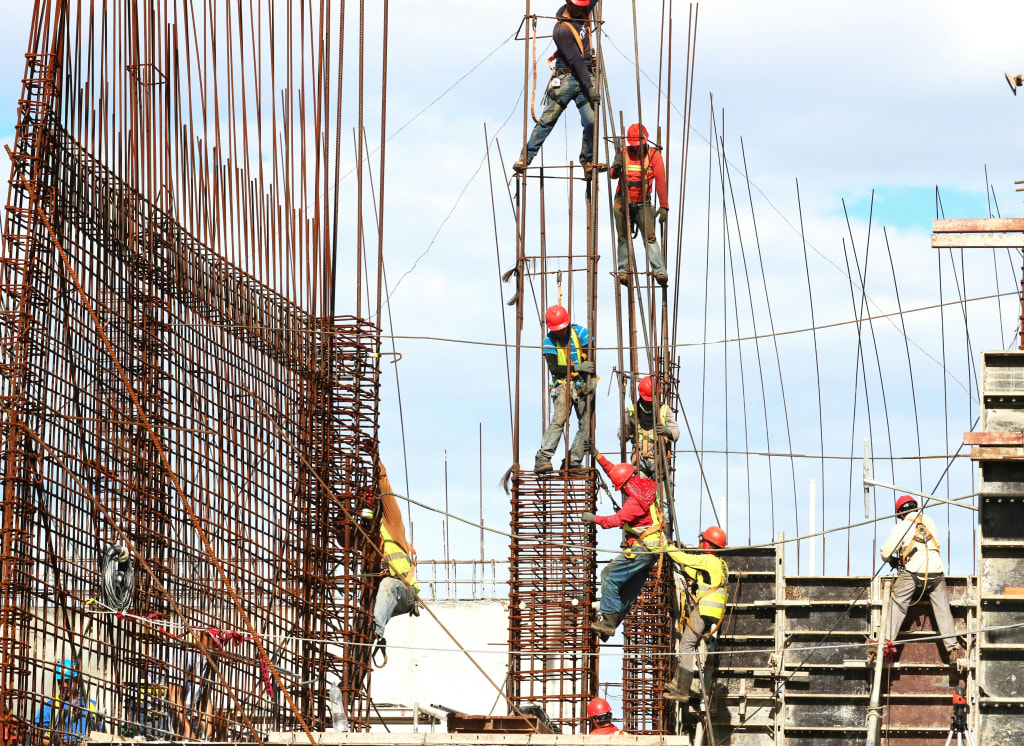Unveiling the Challenges of Underwater Construction: A Journey through Building an Oceanic Bridge Pier
Discover the Intricacies and Innovations in Civil Engineering's Most Daunting Task

Amidst the relentless battle against the raging ocean currents, a team of diligent laborers is striving to complete the ambitious construction of an underwater Bridge Pier. However, lurking beneath the surface lies a crucial mistake made by the chief construction engineer—a mistake that could spell catastrophe. Welcome to the realm of civil engineering's most formidable challenge: underwater construction.
Contrary to its name, today's engineers opt to avoid direct contact with water altogether when embarking on the construction of underwater structures. To achieve this feat, the first step entails erecting a temporary barrier known as a cofferdam to isolate the construction area from the surrounding water. Working directly underwater is impractical, necessitating the creation of a dry workspace within the aquatic environment.
But how does one construct a cofferdam underwater? The process begins with the installation of guide piles using a specialized pile driving hammer machine. These guide piles serve as markers to facilitate the construction of the cofferdam. Subsequently, workers drive numerous sheet piles into the seabed using the same machine. These sheet piles feature interlocking connections at both ends, minimizing water leakage and ensuring structural integrity.
The strategic placement of sheet piles progresses from the corners towards the center, maintaining alignment throughout the process. Noteworthy is the unique functionality of the pile driving hammer machine, which employs vibration to penetrate the soil efficiently. This innovative approach, utilizing two counter-rotating eccentric weights, induces rapid vibrations necessary for driving the sheet piles into the seabed.
A barge, resembling a flat-surfaced ship, is then deployed to transport machinery and components essential for the construction site. With preparations complete, the pivotal phase of water removal from the cofferdam commences. However, preceding this crucial step, engineers undertake an extensive geotechnical study to assess the soil's suitability for supporting the cofferdam and eventual structure.
Utilizing advanced testing methods such as the cone penetration test, engineers gather essential data regarding soil strength and bedrock depth. Armed with this knowledge, they ensure the sheet piles extend deep enough to reach the bedrock, guaranteeing structural stability.
As the water level within the cofferdam decreases during pumping, water leakage between the sheet piles becomes apparent. To address this issue, single-layer sheet piles are reinforced with a double-layer configuration, effectively mitigating water ingress. Yet, despite these precautions, disaster strikes as the entire cofferdam collapses inward upon complete water removal.
The catastrophic collapse highlights the importance of implementing additional measures to prevent structural failure. Erecting a bracing frame system alongside the sheet piles provides lateral support, reinforcing the cofferdam against inward collapse. Strengthened and secured, the cofferdam ultimately reaches the bedrock, paving the way for subsequent construction phases.
The concrete seal course technique is employed to seal the base securely, preventing water seepage and laying the foundation for the bridge pier. Following meticulous construction procedures, including the installation of reinforcement bars and pouring of concrete, the bridge pier skeleton gradually takes shape.
As construction progresses, meticulous attention is paid to the quality and durability of materials to withstand water pressure and support the bridge's weight. Once completed, the bridge pier undergoes a curing period to attain full strength before the cofferdam is removed.
However, the removal process must be executed carefully to avoid compromising the structure's integrity. Sheet piles are cut below the level of the concrete seal course, ensuring structural stability while eliminating the eyesore of the cofferdam. With the cofferdam removed, the robust bridge pier stands ready to support its monumental task—a testament to engineering ingenuity and perseverance.
In conclusion, while the challenges of underwater construction are vast and formidable, innovative techniques and meticulous planning ensure success even in the face of adversity. As we delve deeper into the intricacies of underwater construction technology, the indomitable spirit of human ingenuity shines through, paving the way for new frontiers in civil engineering.
About the Creator
Briona Whitehead
Hi, I'm Briona Whitehead, a storyteller who specializes in crafting gripping tales of suspense and mystery. Get ready for an unforgettable adventure that will leave you captivated from start to finish.
Enjoyed the story? Support the Creator.
Subscribe for free to receive all their stories in your feed. You could also pledge your support or give them a one-off tip, letting them know you appreciate their work.





Comments
There are no comments for this story
Be the first to respond and start the conversation.